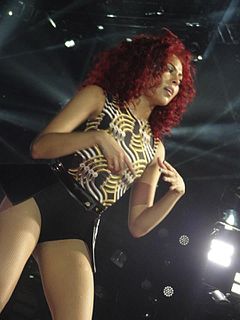| Look up choreography in Wiktionary, the free dictionary. |
Choreography may refer to:
Contents
- Choreography, the process and result of designing movement sequences
- Choreography (dance), the process and result of designing dances
| Look up choreography in Wiktionary, the free dictionary. |
Choreography may refer to:

Computing is any goal-oriented activity requiring, benefiting from, or creating computing machinery. It includes the study and experimentation of algorithmic processes and development of both hardware and software. It has scientific, engineering, mathematical, technological and social aspects. Major computing disciplines include computer engineering, computer science, cybersecurity, data science, information systems, information technology and software engineering.
A process is a set of activities that interact to achieve a result.

In astronomy, a light curve is a graph of light intensity of a celestial object or region, as a function of time. The light is usually in a particular frequency interval or band. Light curves can be periodic, as in the case of eclipsing binaries, Cepheid variables, other periodic variables, and transiting extrasolar planets, or aperiodic, like the light curve of a nova, a cataclysmic variable star, a supernova or a microlensing event or binary as observed during occultation events. The study of the light curve, together with other observations, can yield considerable information about the physical process that produces it or constrain the physical theories about it.

Choreography is the art or practice of designing sequences of movements of physical bodies in which motion or form or both are specified. Choreography may also refer to the design itself. A choreographer is one who creates choreographies by practising the art of choreography, a process known as choreographing. It most commonly refers to dance choreography.

Shading refers to the depiction of depth perception in 3D models or illustrations by varying the level of darkness. Shading tries to approximate local behavior of light on the object's surface and is not to be confused with techniques of adding shadows, such as shadow mapping or shadow volumes, which fall under global behavior of light.
In dance, choreography is the act of designing dance. Choreography may also refer to the design itself, which is sometimes expressed by means of dance notation. A choreographer is one who creates dances. Dance choreography is sometimes called dance composition.
Formation dance is a style of ballroom dancing. It is pattern or shadow team dancing by couples in a formation team. The choreography may be based on a particular dance or a medley of dances. Formation dancing may be done for exhibition or for competition between teams. There is also a type of formation in Bhangra.

In computing, a client is a piece of computer hardware or software that accesses a service made available by a server as part of the client–server model of computer networks. The server is often on another computer system, in which case the client accesses the service by way of a network.
A stream is a body of moving water.
Service may refer to:
A process is a series or set of activities that interact to produce a result; it may occur once-only or be recurrent or periodic.

A computer cluster is a set of computers that work together so that they can be viewed as a single system. Unlike grid computers, computer clusters have each node set to perform the same task, controlled and scheduled by software.
The terms dance technology and Dance and Technology refer to application of modern information technology in activities related to dance: in dance education, choreography, performance, and research.
In computer science, a concurrent data structure is a particular way of storing and organizing data for access by multiple computing threads on a computer.
Service choreography in business computing is a form of service composition in which the interaction protocol between several partner services is defined from a global perspective. The idea underlying the notion of service choreography can be summarised as follows:
"Dancers dance following a global scenario without a single point of control"
The third season of So You Think You Can Dance, a televised Dutch-Belgian dance competition show, based on an American show by the same name, premiered on August 29, 2010. Dan Karaty, Jan Kooijman, and Euvgenia Parakhina reprised their roles on the judging roles with newcomer Marco Gerris joining the panel as well. Dennis Weening and An Lemmens continued to co-host the program.

Rod Thomas is a Welsh independent singer-songwriter, based in New York. Bright Light Bright Light incorporates many elements of nu-disco into his music, also branching into synthpop, dance and house music. Two of his albums have reached the top 20 on the UK Independent Albums Chart.

Ashley Chrisha Marie Everett is an American dancer and actress. She is best known as lead backup dancer and dance captain for Beyoncé, and has worked with such artists as Usher, Jennifer Lopez, Ne-Yo, Tina Turner, Ciara, Sean Paul and Anitta. She frequently features in high-profile music videos, television commercials and concert tours.

"Yalla" is a song recorded by Romanian singer Inna for her eponymous fourth studio album (2015) and its Japanese counterpart, Body and the Sun (2015). It was released on 3 November 2015 through Empire and Roton. The recording was written by Marcel Botezan, Sebastian Barac, Nadir Tamuz Augustin and Inna, while production was handled by the first two under the name of Play & Win. A dance-pop and Eurodance track, "Yalla" is sung in both English and Arabic.
In computer science, choreographic programming is a programming paradigm where programs are compositions of interactions among multiple concurrent participants.